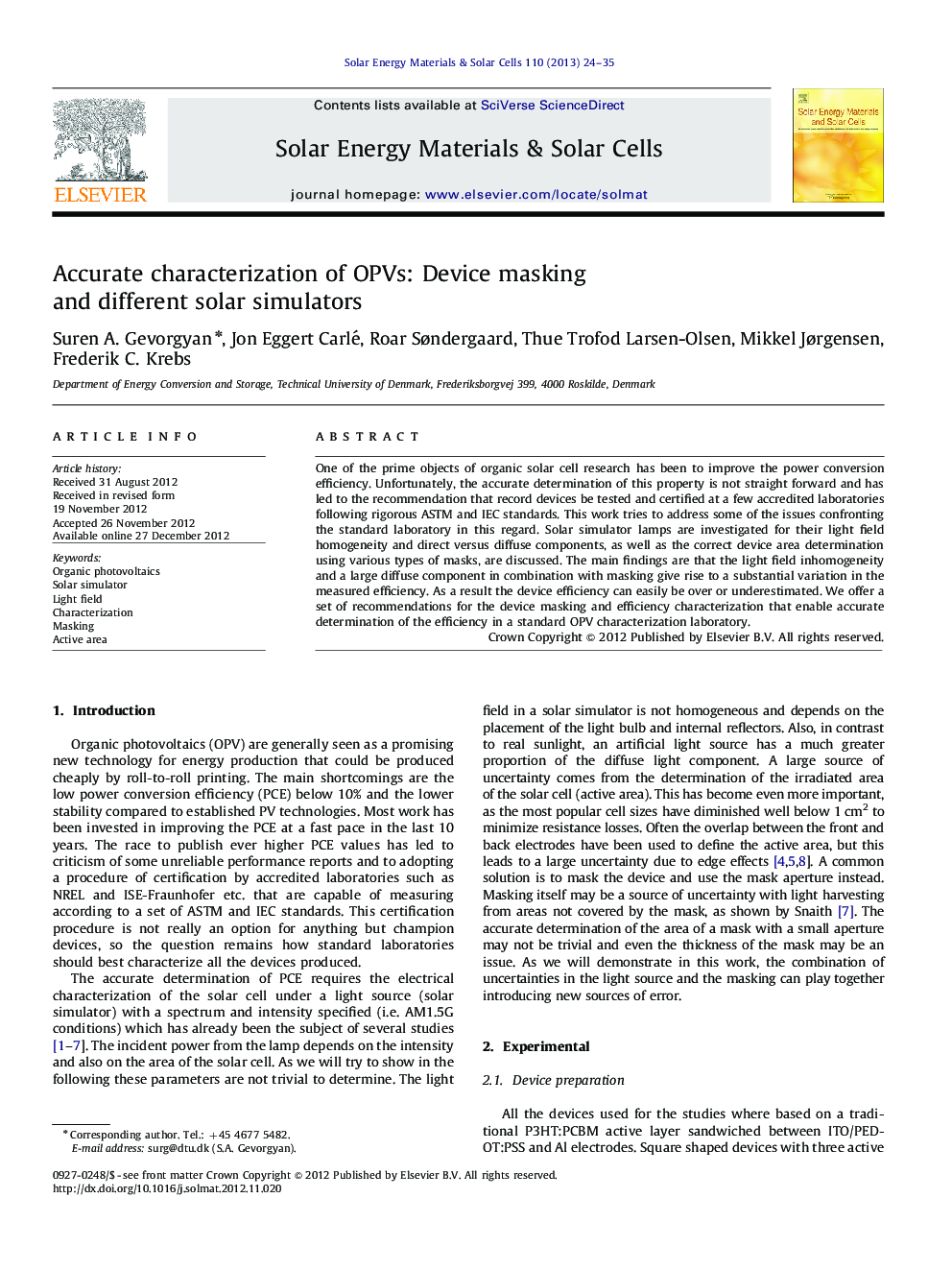| Article ID | Journal | Published Year | Pages | File Type |
|---|---|---|---|---|
| 78582 | Solar Energy Materials and Solar Cells | 2013 | 12 Pages |
One of the prime objects of organic solar cell research has been to improve the power conversion efficiency. Unfortunately, the accurate determination of this property is not straight forward and has led to the recommendation that record devices be tested and certified at a few accredited laboratories following rigorous ASTM and IEC standards. This work tries to address some of the issues confronting the standard laboratory in this regard. Solar simulator lamps are investigated for their light field homogeneity and direct versus diffuse components, as well as the correct device area determination using various types of masks, are discussed. The main findings are that the light field inhomogeneity and a large diffuse component in combination with masking give rise to a substantial variation in the measured efficiency. As a result the device efficiency can easily be over or underestimated. We offer a set of recommendations for the device masking and efficiency characterization that enable accurate determination of the efficiency in a standard OPV characterization laboratory.
► We study direct and diffuse components of solar simulators compared to real sunlight. ► We study optimal mask thicknesses and apertures for device characterization. ► We offer a set of recommendations for accurate characterization of OPV devices.
